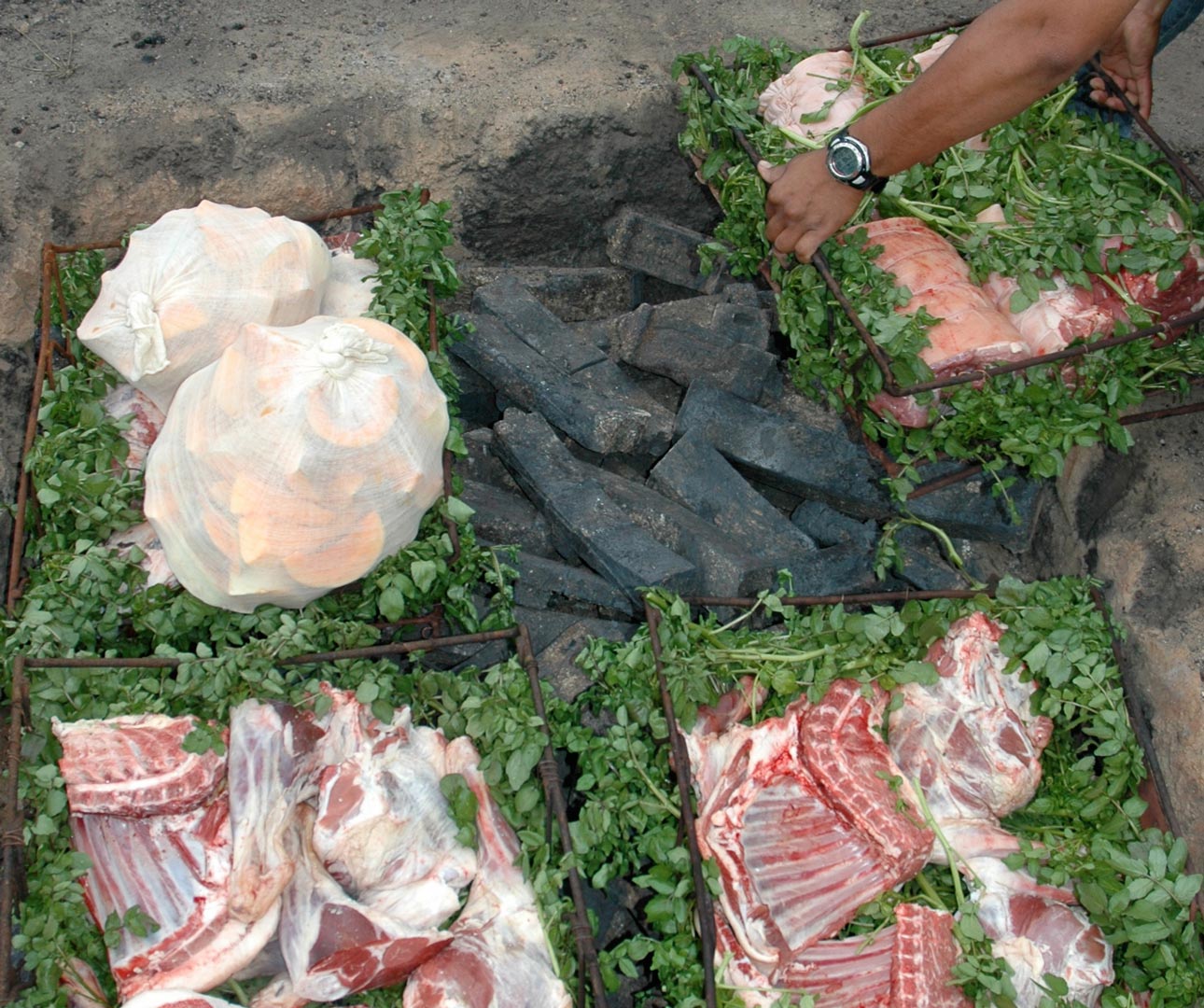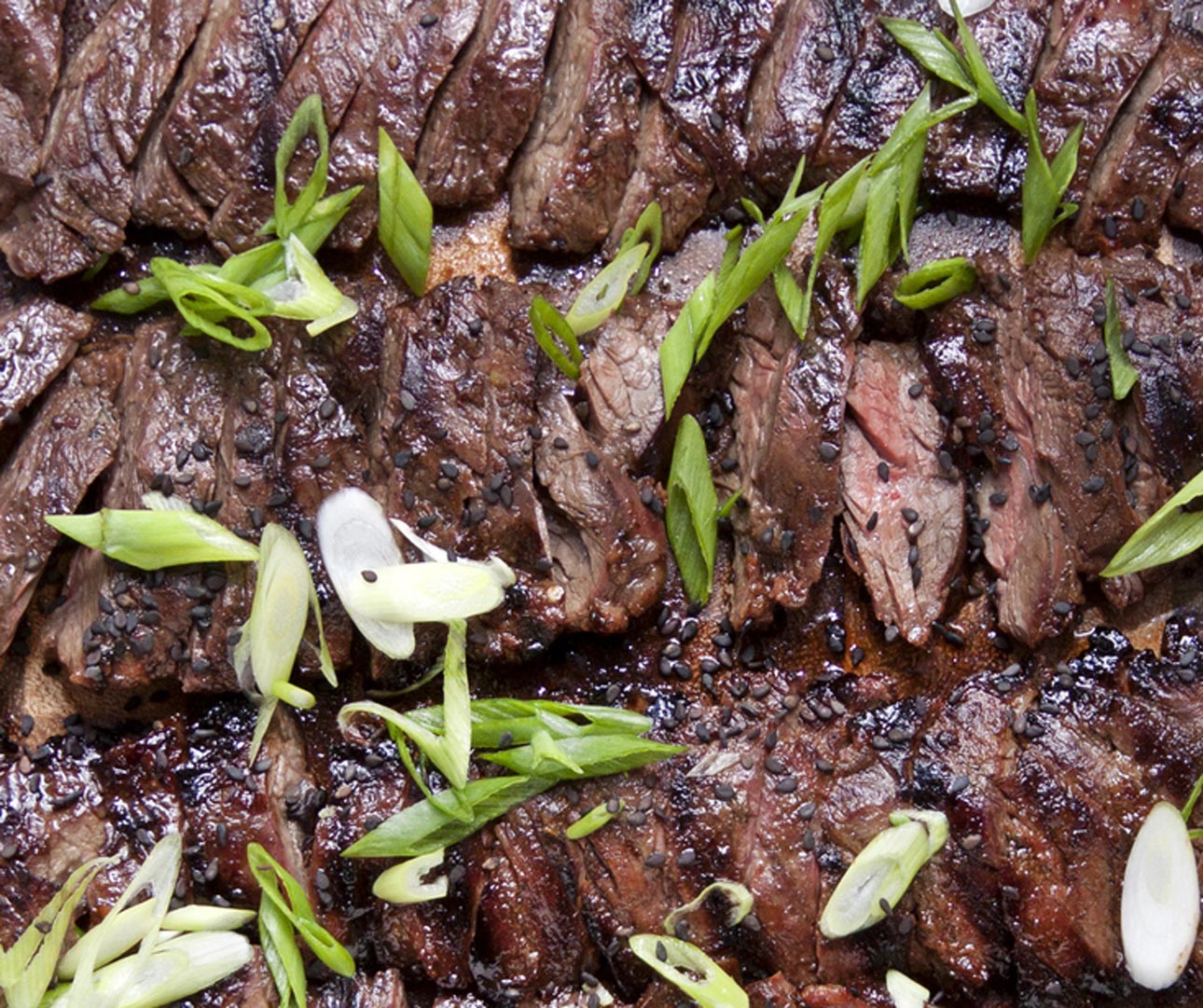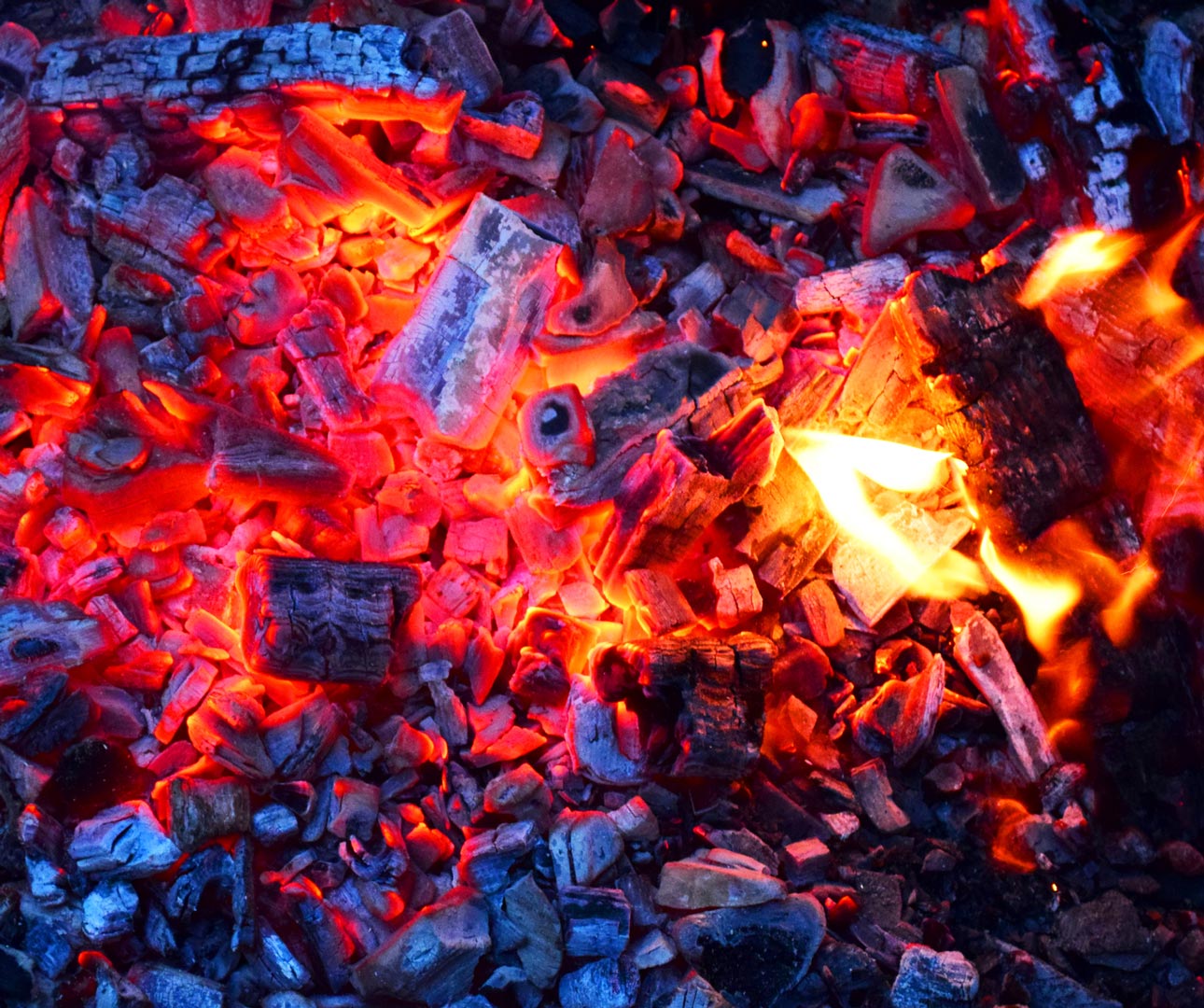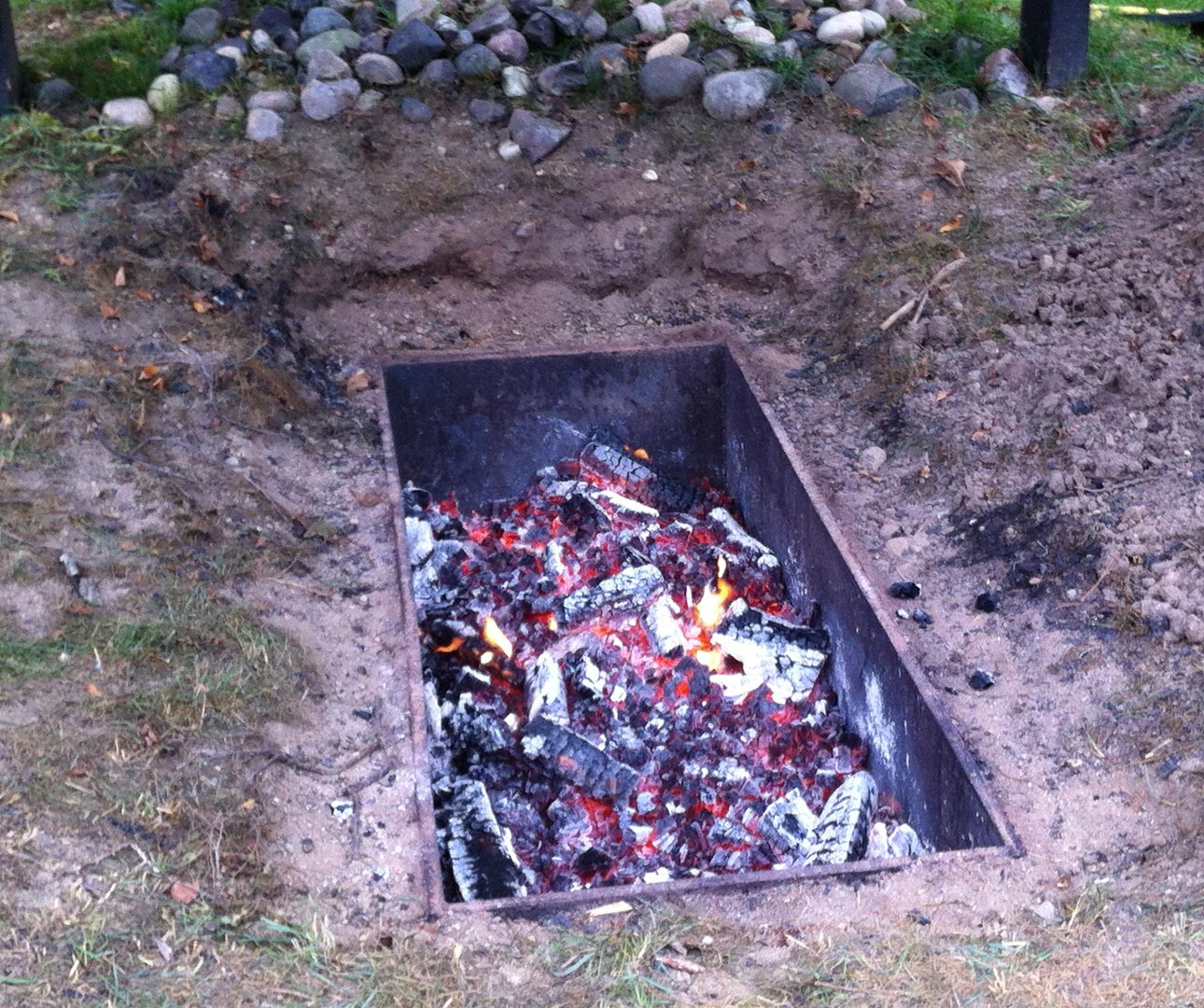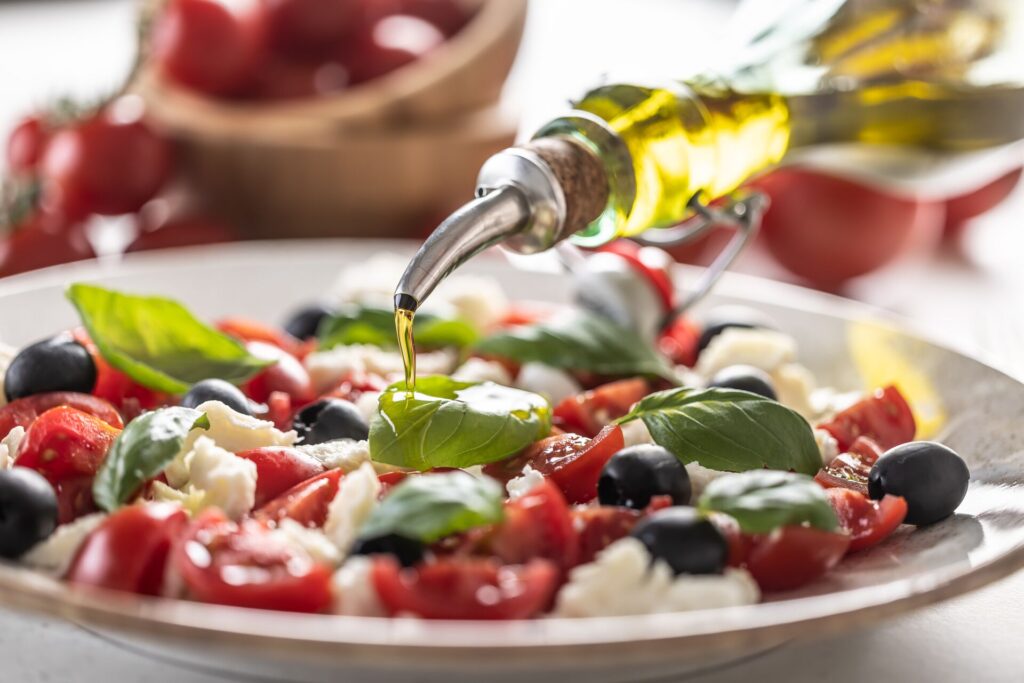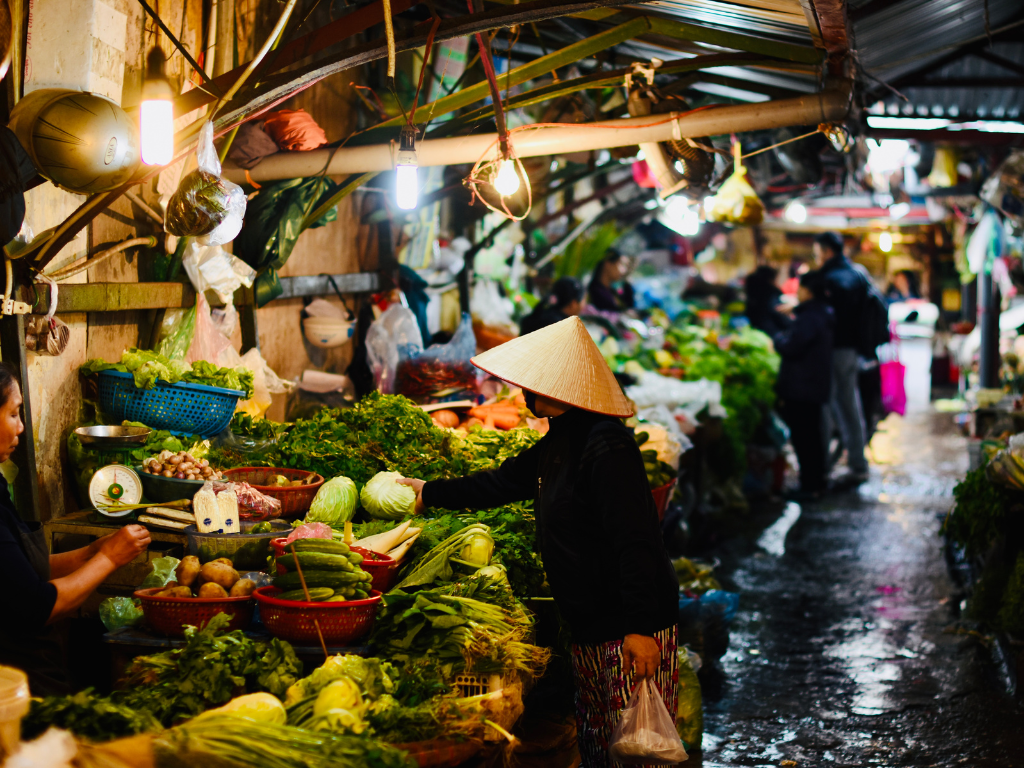Famous across the Pacific region, there’s an unusual style of cooking that has refused to go out of fashion for thousands of years thanks to the delicious dishes it produces. Most popular in New Zealand, where it’s called “Hāngi”, the art of Hāngi is a deceptively simple affair that involves a pit, rocks, leaves and hot ashes beneath it all. Combining the high temperatures of a wood-burning oven with moisture trapped inside the leaf-wrapped food, the hot pit (full of smoky rocks and the aromas of hot turf) imparts its own incredible flavors.
Hangi © iStock/indiginz
One of the most important stages in any Hāngi is making sure the food packs a punch before it’s thrown in the pit. Whether it’s beef, pork or chicken, there should be big tubs of soy, mirin and chillies on hand to add big flavors in a day-long marinade. That’s not where it ends, though. Pork loins are then rubbed with red curry paste and kawakawa (a local herb); chicken has Manuka honey and ginger rubbed all over; and lamb is smothered with rosemary and garlic.
Skirt Steak © sf_foodphoto
A large wire basket should be prepared, too. Lined with foil if you want to be modern, and countless layers of cabbage or flax leaves if traditional ways are preferred, fill the basket with the kai (food). Then, stock the hole in the ground (roughly half a meter deep) with lots of wood, especially hard woods that create long-burning ash, and volcanic rocks. Making sure the rocks are volcanic may sound superfluous, but Maoris use them because their non-volcanic equivalents tend to crack or explode at high temperatures.
Coals © iStock/RADsan
It’s important to remember that a Hāngi is not an exotic BBQ, in fact, it’s more of a steam-cooker. The steam comes from the non-flammable sackcloths, soaked in water, that are laid across the top layer of stones. This steam pushes through the twigs and sticks that hold up the food on offer, from kūmara (sweet potatoes) to steamed pudding, which sits beneath a covering of soil that insulates it from the wind. Cooking times depend on the size of the meal, but tend to last between two and four hours.
Hangi © iStock/amelita1
Whilst a Hāngi can be used for every-day cooking, larger pits tend to be reserved for festivals, clan gatherings and big celebrations. These are often preluded by local customs like the “Hongi” greeting. Taking the place of a formal handshake or welcome in the western world, the symbolism behind the touching of foreheads and noses is meant to turn the recipient from a visitor (manuhiri) into a Māori (tangata whenua), ensuring that Hāngi dinners are rarely formal occasions, but rather fun, sit-downs with friends.
If you would like to experience local customs and savor the unique flavors of a traditional hāngi dinner head to Rotorua, where geothermal steam cooks food to perfection on The Long White Cloud trip.
